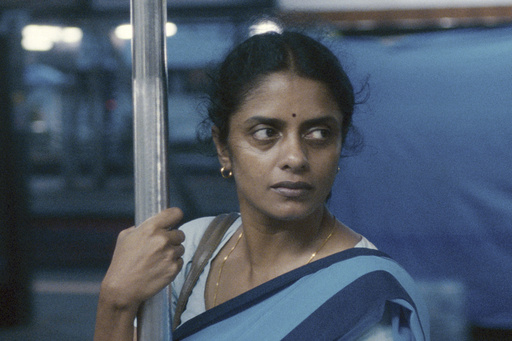NEW YORK — Payal Kapadia’s films subtly weave fiction into their narratives, providing a unique lens through which to explore contemporary issues. Her initial film, “Night of Knowing Nothing,” documents the student protests at the Film and Television Institute of India, her own alma mater. This documentary is enhanced by fictional correspondence between two students who find themselves divided by caste differences.
In her first narrative feature, “All We Imagine as Light,” the film starts with a documentary-style homage to Mumbai’s nighttime scenes before transitioning to follow the lives of three women working in hospitals. These women navigate the complexities of their daily lives while also grappling with the rigid social structure of Indian society and their individual dreams.
Kapadia reflects on her filmmaking philosophy, saying, “Real life offers more intrigue than cinema itself; it’s about extracting its essence.” She often quotes poet Rainer Maria Rilke, highlighting the notion that if one’s real life feels mundane, it simply means they haven’t tapped into its depths.
“All We Imagine as Light,” which is set to premiere in theaters this Friday and will expand in subsequent weeks, stands out as one of the most enriching cinematic experiences of the year. The film, which received the Grand Prix at the Cannes Film Festival, beautifully captures the essence of life in Mumbai, illustrating its dreams, deceptions, and the challenges it presents.
As the narrative progresses, “All We Imagine as Light” takes on a more fable-like quality. The character Prabha (played by Kani Kusruti) has lost contact with her husband, who is working abroad in Germany. Anu (Divya Prabha) is caught in a clandestine romance with a Muslim man, facing the challenges of societal norms and the likelihood of heartbreak. Meanwhile, the recently widowed Parvaty (Chhaya Kadam) faces eviction from her long-term home.
When the trio leaves the city—after Parvaty is compelled to return to her village—they begin to shed the various societal constraints that have burdened them. This journey allows them to envision new possibilities, discovering a light obscured by the patriarchal structure of Mumbai. Kapadia explains her intent to create a dreamlike atmosphere towards the film’s conclusion, stating, “I aimed for the initial part to feel authentic and documentary-like, transitioning into a slower, more ethereal pace in the latter half.”
The captivating essence of “All We Imagine as Light” has made it one of the year’s most lauded films. Notably, it was not chosen as India’s entry for the best international feature at the Academy Awards. In announcing their selection of Kiran Rao’s “Laapataa Ladies,” the Film Federation of India’s president, Ravi Kottarakara, controversially described Kapadia’s work as feeling more like a European film set in India.
In response to this decision, Kapadia expressed her views on the diverse nature of India, stating, “India is an expansive continent with numerous identities. While I appreciate the film they chose, I wonder what purpose such statements serve.” She also noted that the selection committee comprised entirely of men, questioning whether that truly reflects the Indian experience.
At 38, Kapadia engaged in a dialogue with a reporter at the Criterion Collection in New York during the screening of her film at the New York Film Festival. Her bag was filled with DVDs, including a box set from Agnes Varda. Kapadia is known for her cheerful demeanor and her ability to weave discussions about art and social issues effortlessly. The emotional responses evoked by her film, including spontaneous applause from festival-goers, are what she values most as a filmmaker.
“What else could a filmmaker desire than for their work to be acknowledged and cherished? I personally find catharsis in cinema,” she remarks. “I aim to create films that evoke emotion in others as well.”
Kapadia admits to being quite sentimental, revealing, “I cry easily—I’m a romantic at heart.” Like her characters, she seeks an alternative path in filmmaking, stepping away from the conventional Bollywood studio system. She has argued that Indian cinema encompasses a wider range of narratives beyond the high-budget productions typically associated with the industry.
“Independent filmmakers anywhere often feel out of place,” she jokes, referencing the shared struggles of such creators. “We are often questioned about our projects and their visibility. Independent filmmaking is universally challenging.”
Born and raised in Mumbai, Kapadia has deep familial ties to the city. She describes her childhood experiences and how her back-and-forth travels instilled a sense of wonder in her about Mumbai. “There’s a blend of anonymity and liberation,” she reflects, “but the city is also rife with extreme inequality, which has become more pronounced since the 1980s. The lack of social support for those in financial need is disheartening.”
She illustrates this point with a scene from “All We Imagine as Light,” depicting a crowded train station at the end of a working day. An urgent announcement warns passengers against climbing onto the train’s roof to avoid electrocution, revealing the desperate lengths to which individuals will go just to make it home.
“This highlights a grim reality,” she emphasizes. “People are willing to risk their lives for something as fundamental as reaching home on time.”
Kapadia points out that such pressures are not exclusive to Mumbai but can also be found in other capitalist environments where individuals may not realize that their conditions can change. “The struggle lies in recognizing that alternative possibilities exist,” she asserts. “Often, we hinder our own progress by not envisioning a different path.”
